Affiliate links on Android Authority may earn us a commission. Learn more.
Verizon's 5G network now available in 31 US cities (Update: More cities added)
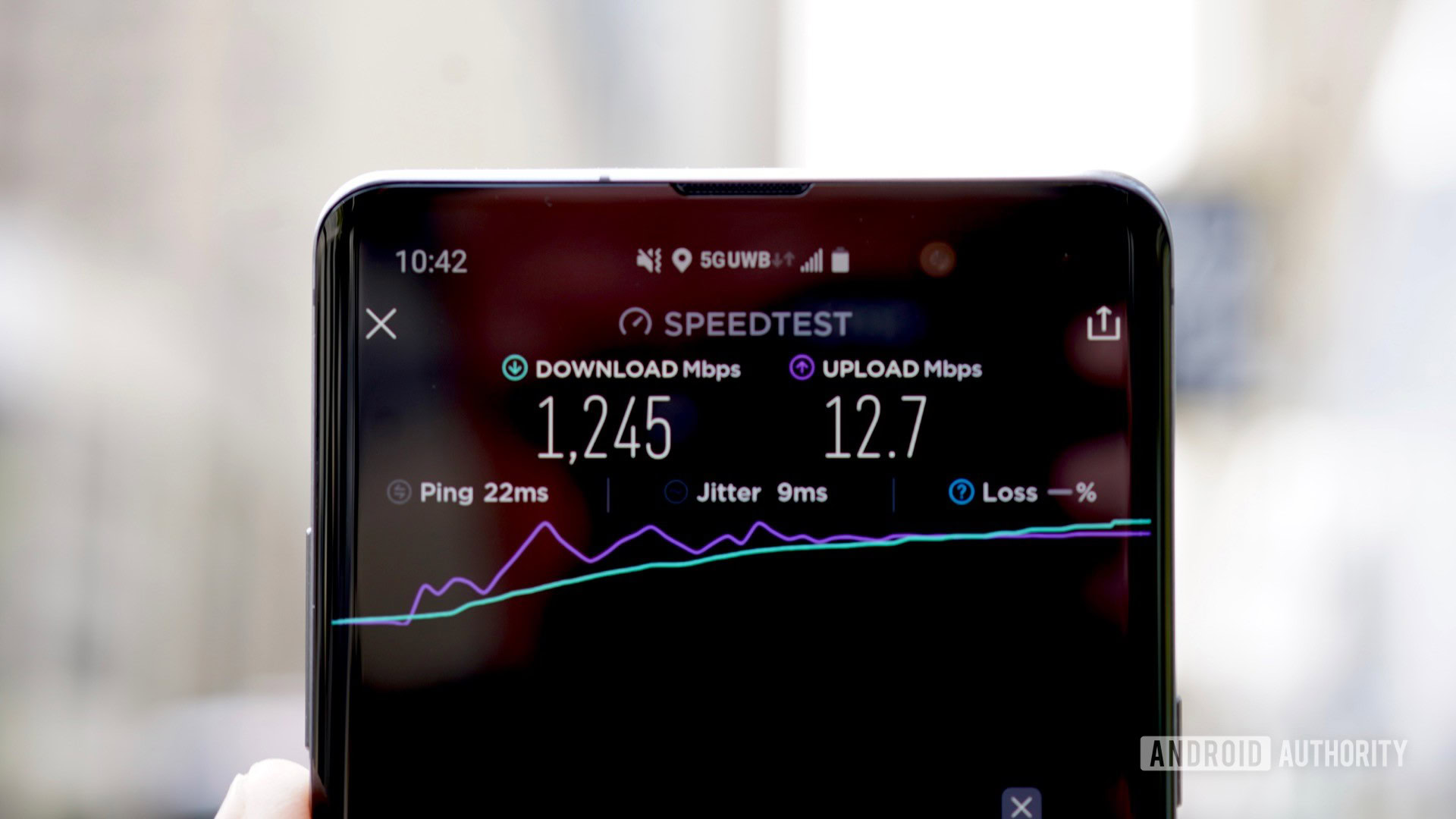
Update, January 31, 2020 (4:43AM ET): Verizon has extended its 5G network to three more US cities. These include: Little Rock, Kansas City, and Cincinnati. These three new cities join the list of 31 other cities covered by Verizon 5G in 2019.
In Little Rock, Verizon’s 5G service will be available in parts of Midtown, University District, Birchwood, Otter Creek, and near landmarks such as: UAMS College of Medicine, University of Arkansas at Little Rock, Rock Creek Square Plaza Shopping Center, and Outlets of Little Rock.
In Kansas City, the service will be concentrated in parts of Downtown, Midtown-Westport, Plaza Midtown, Olathe, and near landmarks such as: The Garment District, Kauffman Center for the Performing Arts, Rockhurst University, as well as inside and around the professional football stadium.
In Cincinnati, Verizon 5G will cover parts of Downtown, Mt. Adams, West End, Evanston, Walnut Hills, Corryville, Clifton, Price Hill, Over-The-Rhine, Mt Auburn, Avondale, Newport, Dayton, Bellevue, and near landmarks such as: Great American Ballpark, Duke Energy Convention Center, Serpentine Wall, City Hall, Xavier University, Cincinnati Zoo, Hebrew Union College, Cincinnati Christian University, and Newport Waterfront.
Verizon began its preparations for 5G years ago by densifying its 4G LTE network using small cell sites in highly-populated areas. The company’s current fiber-based network — a huge web consisting of 900,000 global fiber route miles as of August 2018 — will deliver data to Verizon’s millimeter (mmWave) 5G small cell sites scattered across the nation. In rural areas, Version will install fiber cable in 1,000-foot intervals.
Overall, Verizon’s 5G rollout plan is the exact opposite of T-Mobile: Sell a fixed in-home 5G-based service first and launch a mobile 5G service sometime thereafter. T-Mobile is focusing on nationwide 5G coverage using long-range LTE Band 71 and two other short-range mmWave bands first, followed by an in-home service at a later date.
While T-Mobile’s 5G service is based on industry standards approved by the 3rd Generation Partnership Project conglomerate (3GPP), Verizon is initially using its proprietary-yet-open 5G TF network standard. Verizon took this route because the company simply didn’t want to wait for the 3GPP 5G NR standard to make it to network equipment, devices, chipsets, and software. Once hardware, software, and equipment arrive using the 3GPP 5G NR standard, Verizon will update its “First on 5G” members for free.
Meanwhile, Verizon’s other big competitor AT&T is pushing to bring mobile 5G to 12 large and mid-sized cities – including Atlanta, Charlotte, Dallas, and more – in 2018. The company will then increase that coverage to around 19 cities in 2019 and eventually expand its 5G network once it’s established the service in those 19 markets. A home network service is in the works too, which AT&T is currently testing in limited markets like South Bend, Indiana.
Don’t miss: Putting Verizon’s nascent 5G network to the test
The key takeaway from 5G is capacity in addition to faster download speeds. According to Verizon Communications chief executive Hans Vestberg, 4G can handle around 1,000 connected devices per square kilometer whereas 5G can handle one million. Meanwhile, 4G has a latency of around 200 milliseconds whereas 5G goes down to a mere 10 milliseconds.
All that said, here’s what we know about Verizon 5G and what’s to come later.
Spectrum
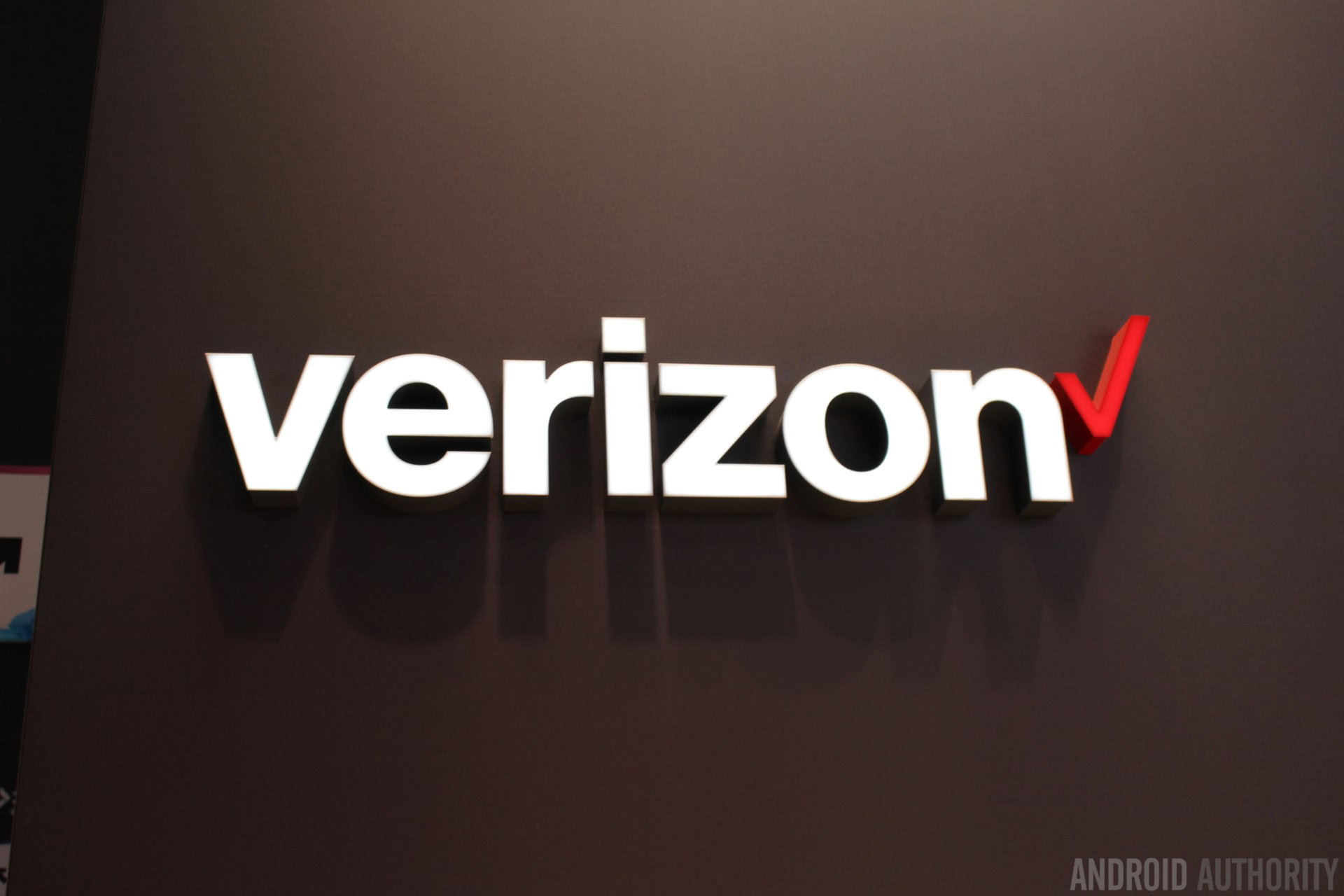
Verizon 5G uses the 28GHz and 39GHz bands, both of which are high-band millimeter wave (mmWave) frequencies. Verizon holds 76 percent of the available 28GHz band and 46 percent of the available 39GHz band. So far there’s no indication Verizon will use LTE Band 71 for long-range 5G coverage like T-Mobile.
Rollout plans for Verizon 5G home
Verizon launched its 5G-based home networking service in parts of Houston, Indianapolis, Los Angeles and Sacramento on October 1. The company will build out its 5G coverage using equipment based on the 3GPP 5G NR standard when they become available. According to Verizon, Clayton Harris of Houston, Texas, became the very first 5G customer.
Verizon’s 5G Home service is now available in portions of Houston, Indianapolis, Los Angeles, and Sacramento. In January, as part of its quarterly conference call with investors, Verizon confirmed that it will wait until the second half of 2019 to launch the standards-based version of its 5G Home network. In October, its home 5G network expanded once again, this time to Chicago.
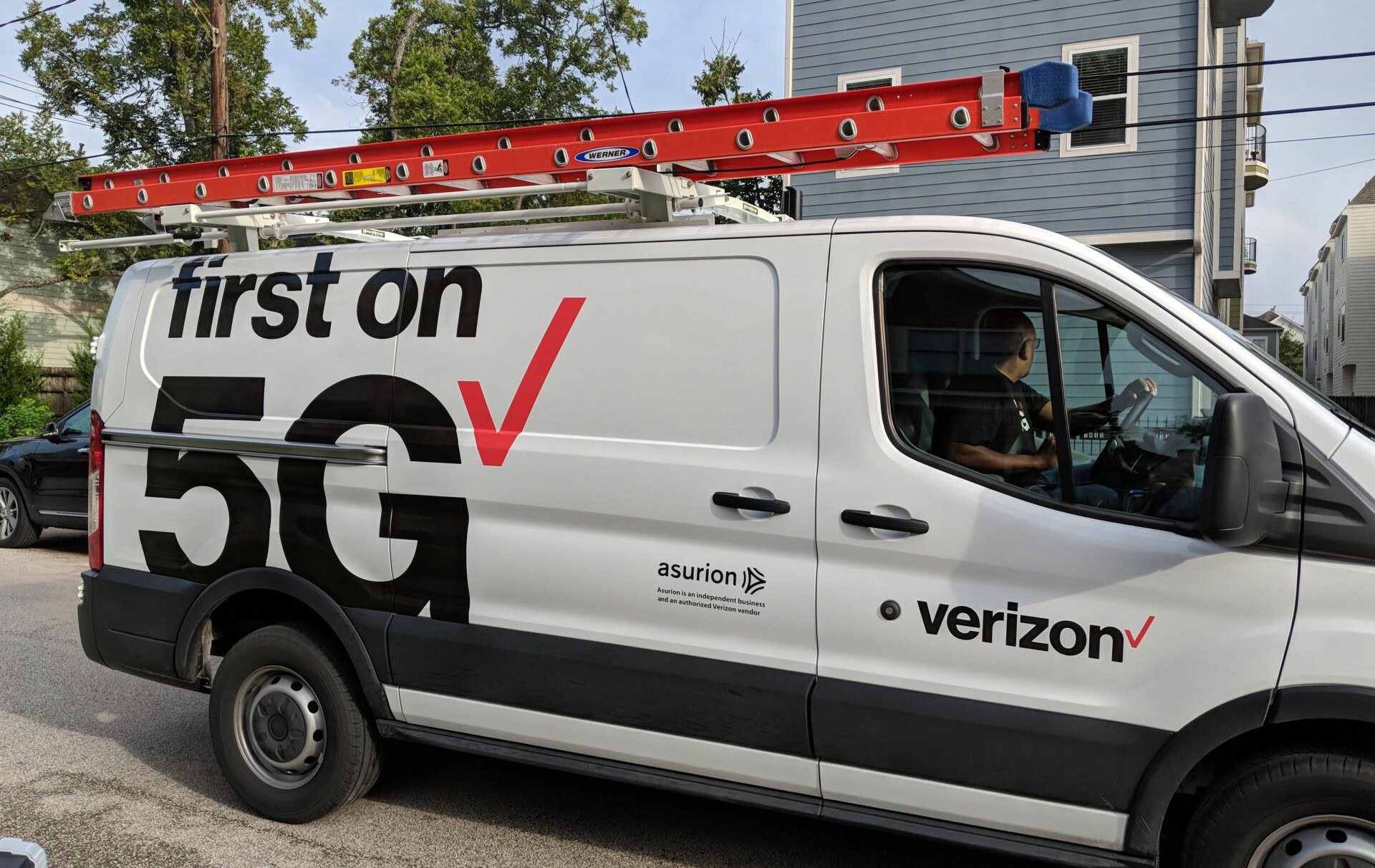
Samsung will provide the initial hardware for Verizon’s in-home service. Depending on the customer’s location, the professionally-installed setup may consist of a compact 5G home and outdoor router, a 5G Radio (Access Unit, Digital Unit-integrated type) and virtualized radio solutions. You’ll also receive a free Apple TV or Google Chromecast device.
According to Verizon, customers will see an average download speed of 300Mbps and a maximum download speed of 940Mbps with no data caps. By comparison, you can get a Charter Spectrum wired connection at 300Mbps for around the same price, but you’ll never see the maximum speed reported by Version.
The company’s in-home service also boasts unlimited data, no annual contracts, no additional fees, no increases, no taxes and no additional equipment charges. It only supports data, meaning you can’t use the in-home service to make cellular calls and send texts. Even more, Verizon claims it won’t throttle data as seen with its current mobile 4G LTE “unlimited” data service.
“In our testing, including rain and windy environments, there have been no indications of typical weather issues affecting 5G Home service,” Verizon states in its FAQ. The comment stems from a common problem seen with millimeter waves, as they can’t easily penetrate buildings and other obstacles. They can also be absorbed by plants and rain. Placing small cell networks throughout the city helps eliminate these barriers.
During the SCWS Americas 2018 wireless connectivity show, Verizon’s Bill Stone said 5G Home connection speeds will double within the next six months. The service currently uses Verizon’s licensed 28GHz spectrum in four 100MHz channels but will eventually expand to eight channels (800MHz).
Real-world testing shows the current download speeds can surpass Verizon’s advertised 300Mbps, hitting 600Mbps and 800Mbps. These tests were conducted by Emil Olbrich, VP of networks at Signals Research Group. He said Verizon already expanded its 5G Home service to six channels at 100MHz each since launch, increasing the initial download and upload speeds. Distance and obstacles seem to have very little effect despite the use of short millimeter waves.
To demonstrate its new in-home 5G Home service, Verizon launched 5G Experience Labs in its four current markets. Although the “labs” remained open for only a week, these experiences provided examples of how gaming and VR will benefit from 5G connectivity. For example, the company teamed up with LiquidSky to showcase high-resolution game streaming on a mobile device paired with a wireless controller. Another demonstration, 5G VR Basketball, enabled players to shoot hoops without seeing the actual, physical hoop.
Rollout plans for Verizon 5G mobile
In November 2018, the company announced it had completed the first 5G data transmission on its network to a smartphone, and in April 2019 it began rolling out its mobile 5G service in Chicago and Minneapolis.
Specifically, in Chicago, Verizon’s 5G coverage is available the West Loop, the South Loop, The Gold Coast, New Town and River North. It’s also around well-known buildings like Union Station, Willis Tower, The Art Institute of Chicago, Millennium Park and The Chicago Theatre. The Verizon store on The Magnificent Mile also has 5G coverage.
In Minneapolis, Verizon’s 5G service is mostly in the city’s Downtown area, including Downtown West and Downtown East. It will also be inside the U.S. Bank Stadium, the Minneapolis Convention Center, the Minneapolis Central Library, the Mill City Museum, Target Center and First Avenue. It’s also available at The Commons, areas of Elliot Park and in the Verizon store in The Mall of America.
In late June, Verizon expanded its 5G network to include parts of Denver, and on July 1 it will expand again to parts of Providence, Rhode Island. If you live in Denver, Verizon’s 5G network is available in areas of Highlands, South of 37th between Tejon and Navajo Streets. It’s also available at LoDo and at Coors Field. Denver’s Central Business District also has 5G network spots at the Denver Center for the Performing Arts, Sculpture Park, and outside Paramount Theatre. Finally, 5G speeds can be found at Capitol Hill and Northern Sections of The Denver Tech Center.
In Providence, Verizon’s 5G speeds are available in parts of College Hill, Federal Hill, Mt. Hope, and at both the Erickson Athletic Complex and Wriston Quadrangle buildings of Brown University. 5G speeds are also available at the Rhode Island School of Design and Providence College.
In mid July, Verizon announced that parts of St. Paul, Minnesota now are covered by the carrier’s 5G network. Specifically, customers with 5G devices can check out the higher download speeds in parts of the downtown area, along with parts of the Lowertown and West Seventh neighborhoods around buildings and landmarks like the Minnesota Children’s Museum, the Minnesota Museum of American Art, the Fitzgerald Theater, Cathedral Hill Park and the Alexander Ramsey House.
In late July, Verizon expanded its 5G network to include parts of Washington DC, Atlanta, Detroit, and Indianapolis. In Washington DC, the 5G network is available in parts of Foggy Bottom, Dupont Circle, Cardozo / U Street, Adams Morgan, Columbia Heights, Le Droit Park, Georgetown Waterfront, Judiciary Square, Shaw, Eckington, NOMA, National Mall and the Smithsonian, Gallery Place / Chinatown, Mt. Vernon Square, Downtown, Penn Quarter, Brentwood, Southwest Waterfront, and the Navy Yard. It also covers parts of Crystal City, Virginia. 5G speeds can also be accessed around many of the city’s famous buildings and landmarks, such as Ronald Reagan National Airport, United States Botanical Gardens, Hart Senate Building, National Gallery of Art, Lafayette Square, The White House, Freedom Plaza, Farragut Square, George Washington University, Capital One Arena, Union Station, Howard University Hospital, George Washington University Hospital, and Georgetown Waterfront Park.
In Atlanta, Verizon has 5G speeds in parts of Downtown, Midtown, Tech Square, and around landmarks as The Fox Theater, Emory University Hospital Midtown, Mercedes Benz Stadium, Home Depot Backyard, Centennial Olympic Park, Georgia Aquarium, World of Coca Cola, and parts of Renaissance Park. Detroit customers can access 5G speeds in parts of Dearborn, Livonia, and Troy, including areas around the Oakland-Troy Airport.
Indianapolis customers can access Verizon’s 5G network in parts of Arsenal Heights, Bates Hendricks, Castleton, Crown Hill, Fountain Square, Grace Tuxedo Park, Hawthorne, Historic Meridian Park, Lockerbie Square, Ransom Place, Renaissance Place, St. Joseph Historic Neighborhood, Upper Canal and Woodruff Place and around such landmarks and public spaces as Garfield Park, and Indiana University School of Medicine.
In late August, Verizon added Phoenix as its 10th city that could access its 5G network. It’s available in parts of downtown Phoenix, around landmarks like the Phoenix Convention Center, Talking Stick Resort Arena, The Orpheum Theatre, CityScape, and Chase Field. 5G network speeds are also available on the Arizona State University campus in nearby Tempe.
Verizon announced in early September that parts of many NFL stadiums in the US now have 5G wireless support. While the service will mostly be in parts of the stadium seating areas, they could be available in other parts of each stadium as well. The official list includes:
- Bank of America Stadium (Carolina Panthers)
- Empower Field at Mile High (Denver Broncos)
- CenturyLink Field (Seattle Seahawks)
- Ford Field (Detroit Lions)
- Gillette Stadium (New England Patriots)
- Hard Rock Stadium (Miami Dolphins)
- Lucas Oil Stadium (Indianapolis Colts)
- MetLife Stadium (New York Giants and New York Jets)
- M&T Bank Stadium (Baltimore Ravens)
- NRG Stadium (Houston Texans)
- Soldier Field (Chicago Bears)
- U.S. Bank Stadium (Minnesota Vikings)
On September 26, three more US cities added support for Verizon’s 5G network. They include parts of New York City:
- Manhattan: Midtown, Financial District, Harlem, East Harlem, Hell’s Kitchen and Washington Heights.
- Brooklyn: Downtown Brooklyn
- The Bronx: Pelham Bay, Fordham Heights, and Hunt’s Point
- Around Landmarks: Bryant Park, St. Patrick’s Cathedral, Madison Square Garden, Trinity Park (Brooklyn), the Lincoln Tunnel (Manhattan Entrance), Javits Center on 11th Ave between 36th and 37th, and the Theatre District on Broadway between 49th and 52nd.
Another city that now has Verizon 5G support is Boise, Idaho. Those speeds can be accessed in Downtown Boise, West Boise, West End, Meridian, and Boise Junction. It’s also available around such landmarks as the Idaho State Capitol, St. Luke’s Boise Medical Center, Fort Boise Park, Capital City Event Center, and Boise Town Square.
Parts of Panama City, Florida now have Verizon 5G network support. They include Downtown Panama City, Forest Park, and the Lower Grand Lagoon in Panama City Beach.
In October, Verizon added 5G support to three major sports and entertainment areas. They include the Talking Stick Resort Arena in Phoenix, Arizona, the Chance Center in San Francisco, California, and Pepsi Arena in Denver, Colorado. Verizon plans to add 5G speeds in the near future to Madison Square Garden in New York City.
Later in that same month, Verizon added 5G support to parts of Dallas, Texas. They include Knox/Henderson, Downtown Dallas, Uptown, Medical Center Area, and Deep Ellum. 5G speeds are aslo available in and around Parkland Memorial Hospital, Children’s Medical Center, Jade Waters Pool, Dallas Comedy House, The Curtain Club, Dallas Theological Seminary and Turtle Creek Park.
Verizon’s 5G network is also now available in parts of Omaha, Nebraska. It can be accessed in and around Downtown Omaha, New Market, Omaha Children’s Museum, The Orpheum Theatre, The Durham Museum, Heartland of America Park, Central High School and Creighton University.
In mid-November, Verizon 5G support was added to parts of Boston, Houston and Sioux Falls. In Boston, 5G speeds can be accessed in Fenway, along Brookline Avenue near Beth Israel Hospital and around such landmarks such as: Fenway Park, Emmanuel College, Northeastern University, Simmons College, Harvard Medical School.
Verizon 5G service in Houston can be found in East Downtown, Uptown, Greenway Plaza, Museum District, Rice Village and around landmarks such as The Galleria Mall, NRG Stadium, BBVA Compass Stadium and Rice University Stadium. In Sioux Falls, 5G support can be found around landmarks like Levitt at the Falls, Orpheum Theatre, Washington Pavilion, State Theatre, and US Federal Courthouse.
In mid-December, Verizon 5G service went live in parts of the Los Angeles, California metro area. Specifically, the service is available in parts of downtown LA, along with Chinatown, Del Rey, and Venice. In addition, its around landmarks like Grand Park, Los Angeles Convention Center, Union Station, LA Live, Staples Center, and Venice Beach Boardwalk.
The service also went live in Des Moines, IA. Verizon 5G access is available in Downtown, East Village, and West Des Moines around landmarks like the Iowa State Capitol, Hyvee Hall, Wells Fargo Arena, Pappajohn Sculpture Park, Principal Park, Jordan Creek Town Center and MercyOne West Des Moines.
Verizon 5G service is live in parts of Hoboken, NJ. The faster speeds are available on Willow Ave between 1st and 16th Streets; 5th Street between Marshall Drive and Garden St, Adams St between 2nd and 7th Streets. The speeds are also around Hoboken University Medical Center, Church Square Park, Hoboken Public Library and Mama Johnson Field.
In Memphis, Verizon 5G speeds are available now in parts of Downtown, Midtown, Cooper-Young, and East Memphis. They are also available in and around landmarks like the National Civil Rights Museum, Overton Square, Medical District, Liberty Bowl, Eastgate Shopping Center, and Oak Court Mall.
Verizon 5G service expanded to six new metro areas on December 20. Those speeds are now available in parts of Charlotte and Greensboro, North Carolina; Grand Rapids, Michigan; Miami, Florida; Salt Lake City, Utah and Spokane, Washington.
On December 23, Verizon 5G service was added to Cleveland and Columbus, Ohio and Hampton Roads, Virginia.
Verizon plans to expand its 5G network to other major cities, including Cincinnati, Kansas City, Little Rock, and San Diego.
Verizon Wireless 5G phones and devices
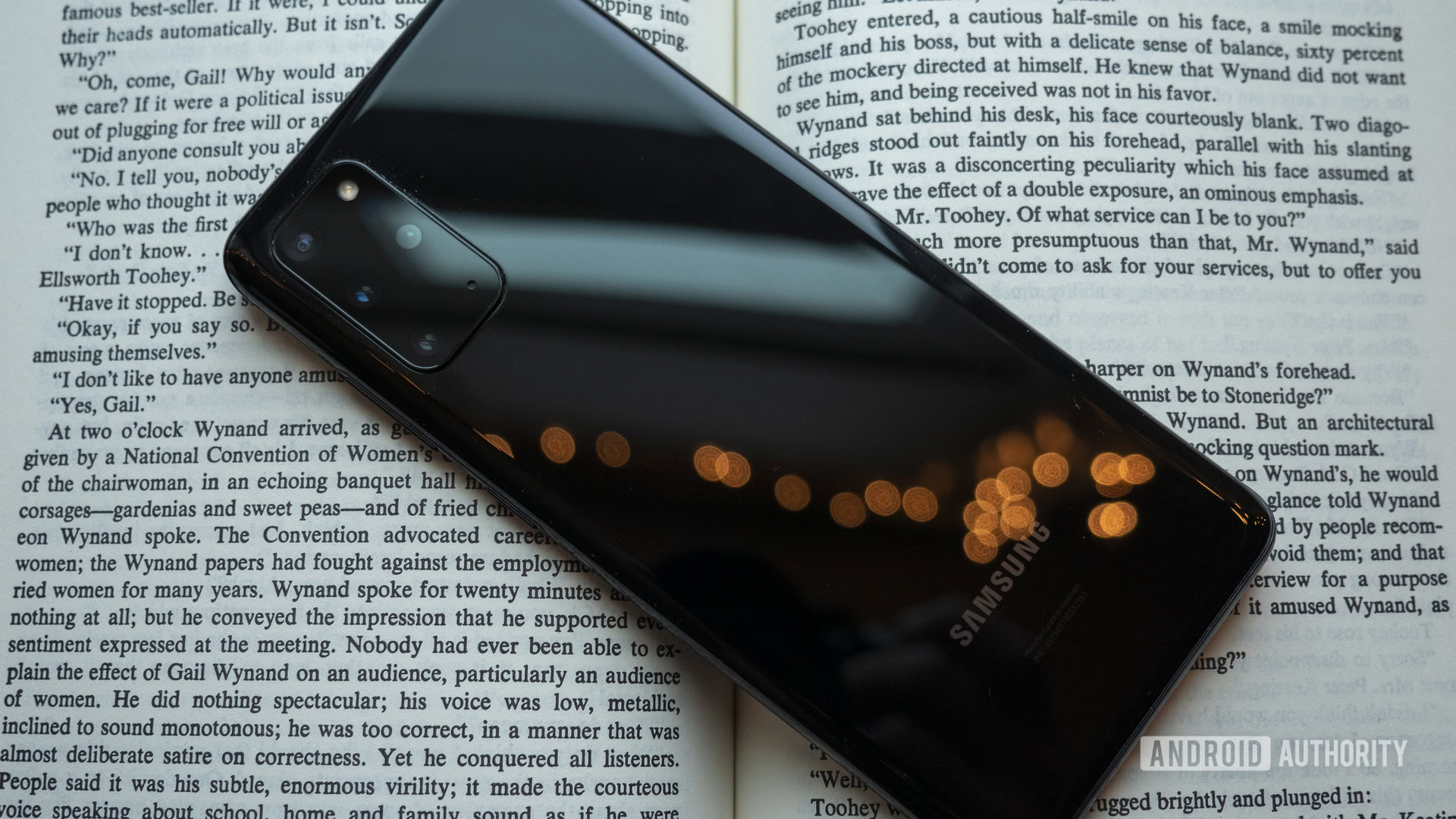
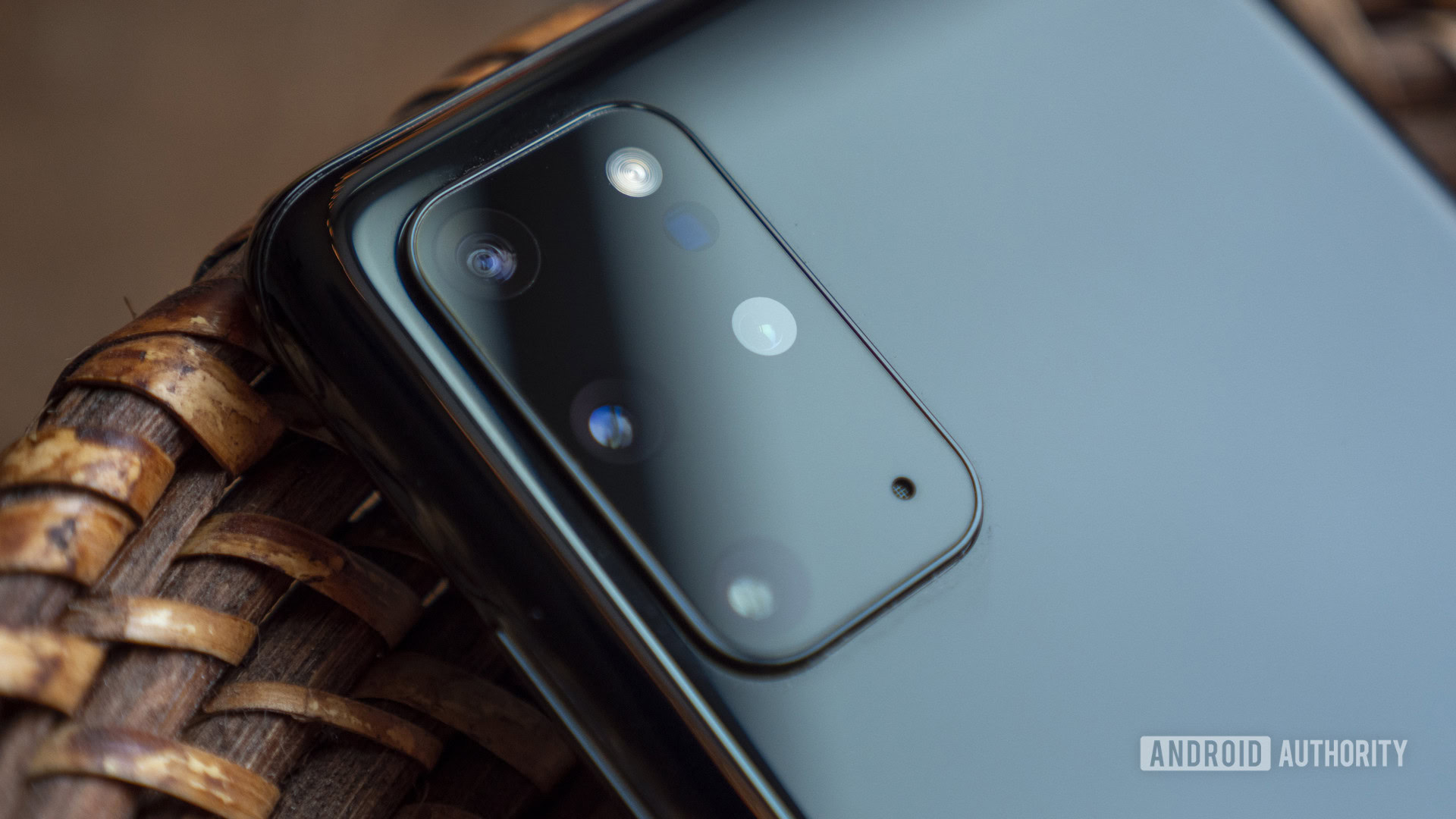
Verizon carries both the Samsung Galaxy S20 Plus and Samsung Galaxy S20 Ultra with 5G on board. The S20 Plus powerhouse flagship starts at $1199.99 upfront or $49.99 per month with 128GB of memory. The 512GB memory option costs $1349.99 outright or $56.24 per month. The handset is available from Verizon in Cosmic Grey, Cosmic Black, and Cloud Blue color options. The Ultra model is a fair bit more expensive, starting at $59.33 per month, running up to $66.66 per month for more storage.
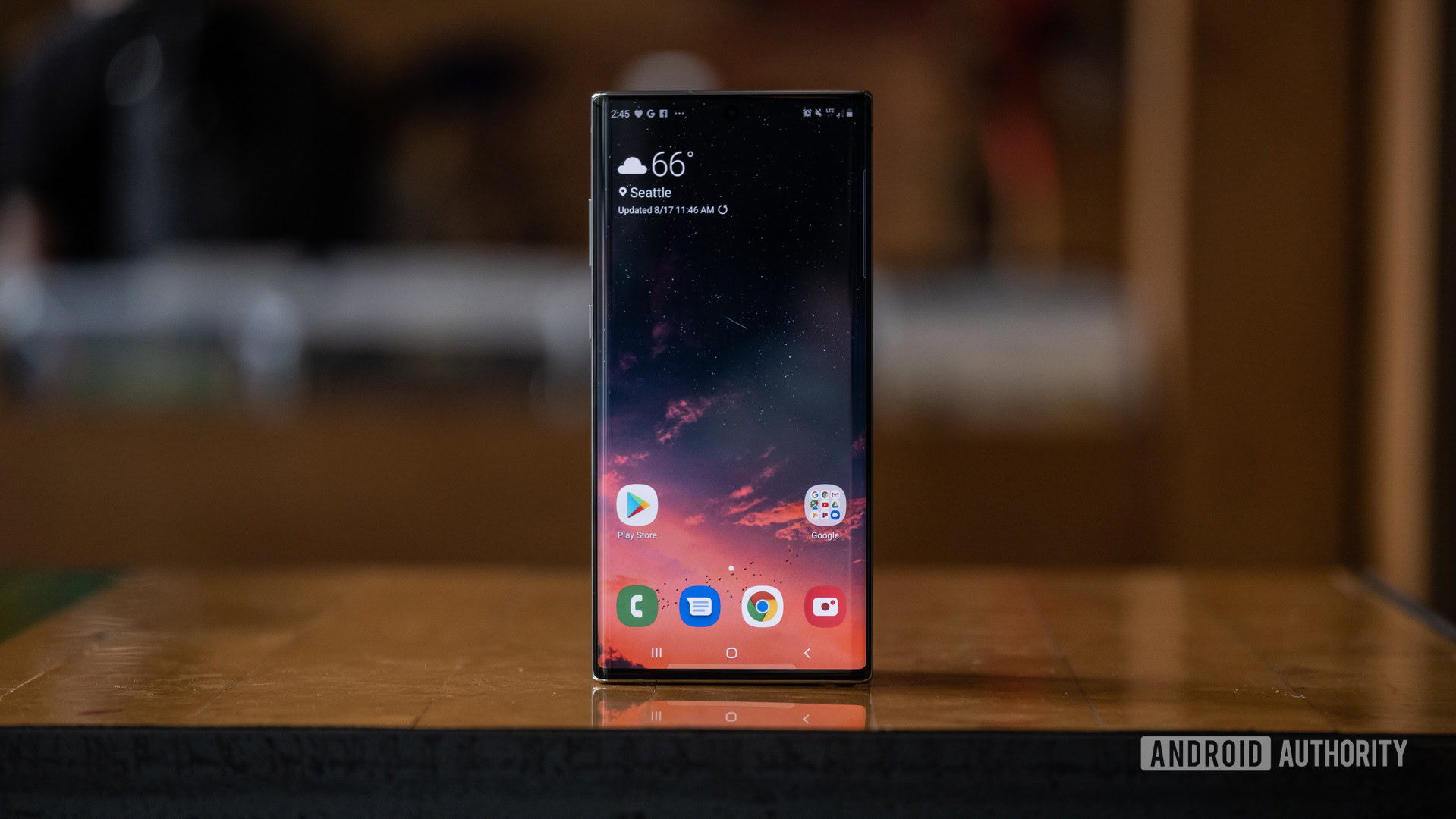
Verizon is also the exclusive U.S. carrier that’s selling the Samsung Galaxy Note 10 Plus 5G phone. The phone has the same hardware specs as the normal Galaxy Note 10 Plus, but with the addition of 5G cellular support. It has a large 6.8-inch display with nearly no bezels, 12GB of RAM, and 256GB of onboard storage, with a microSD card slot for adding more storage. It has a 16MP front-facing camera, and four sensors in the back; a main 12MP camera, a wide-angle 16MP sensor, a telephoto 12MP camera, and a VGA depth sensor. Finally, there’s a 4,300mAh battery. Verizon is selling the Galaxy Note 10 Plus for $1,299.99 without a contract, or you can get it for $54.16 a month for 24 months, or for $36.11 a month for 36 months.
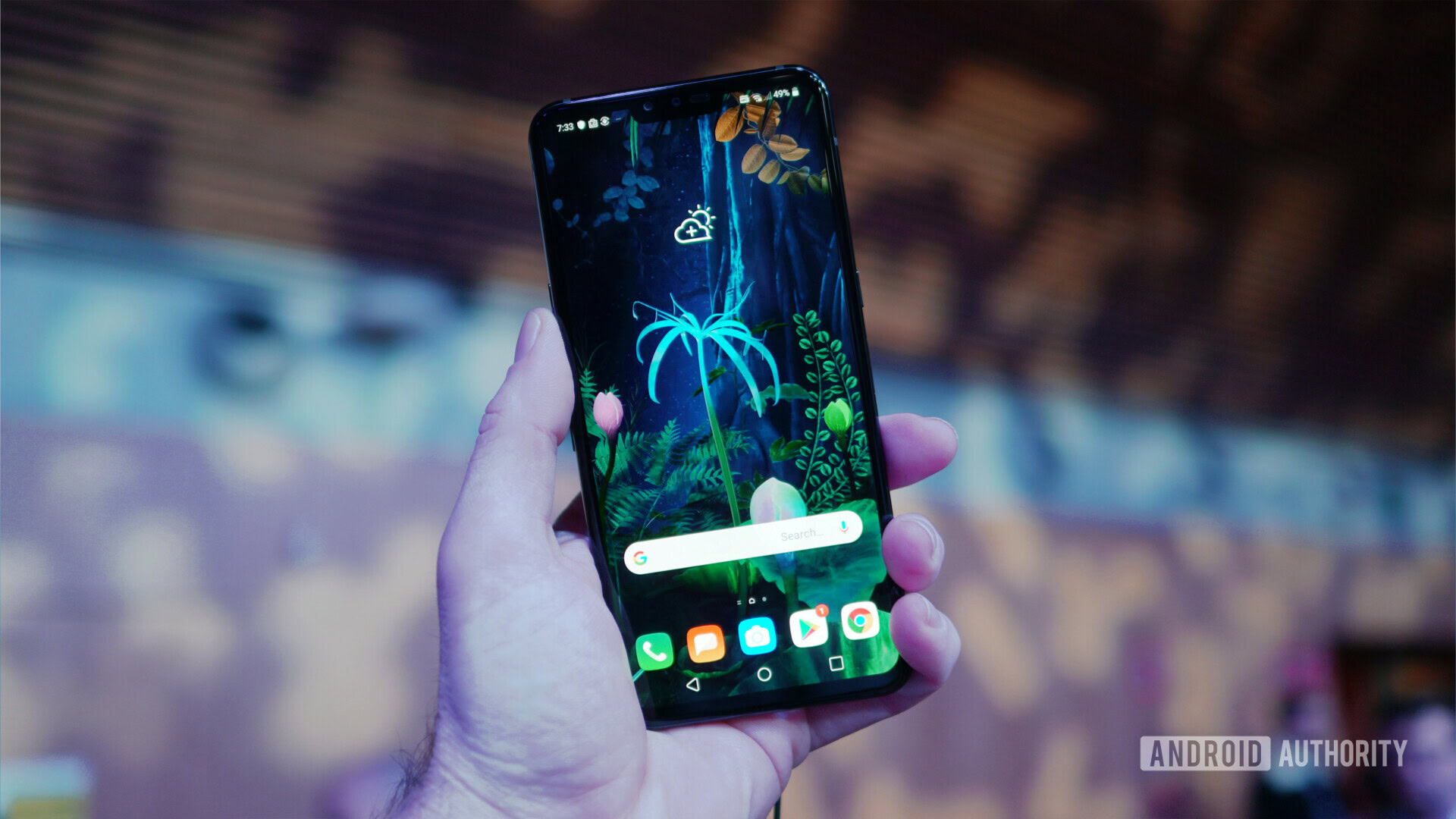
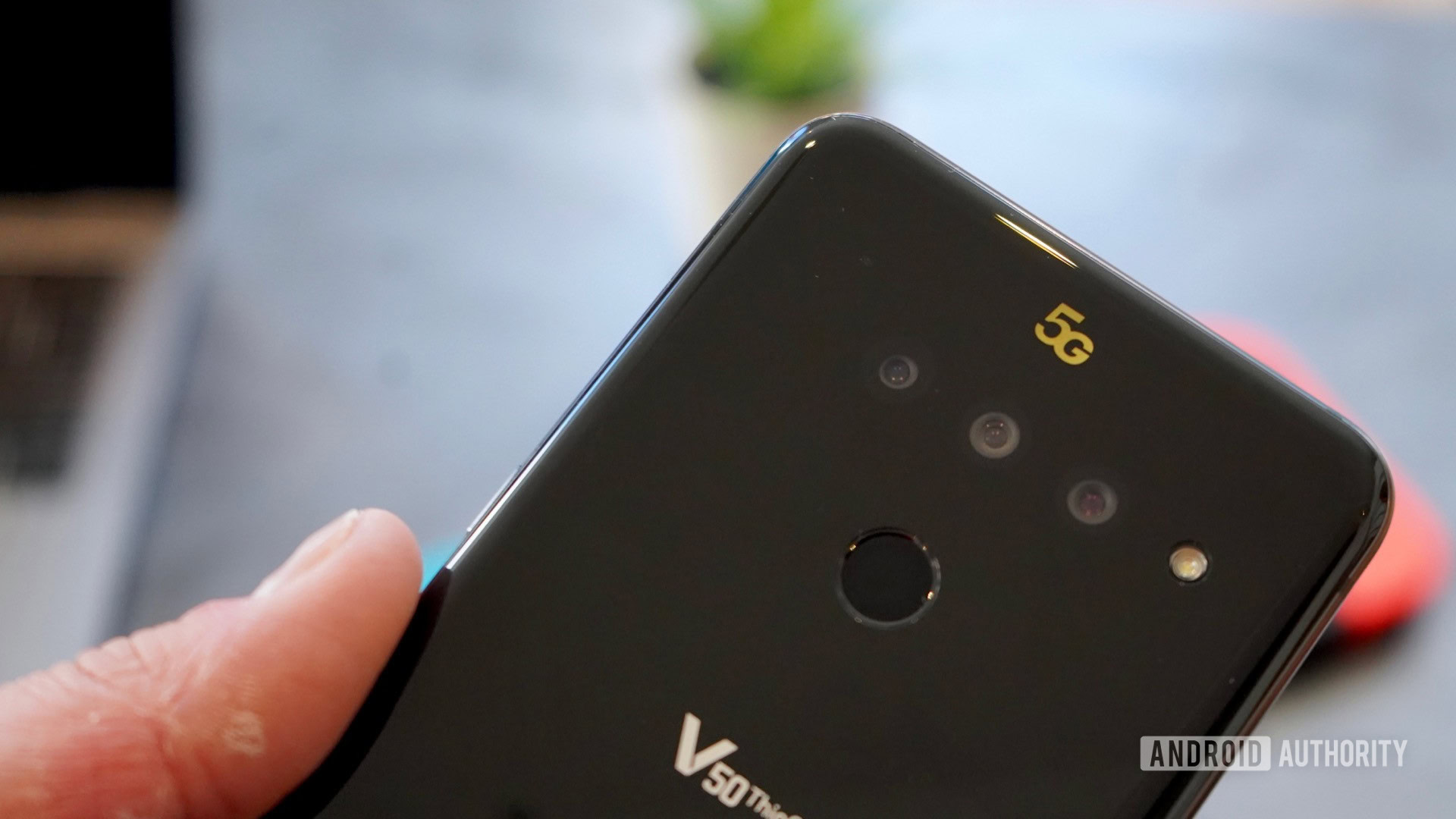
Verizon is also selling the 5G-only LG V50 ThinQ smartphone. The 6.4-inch device can be bought on Verizon without a contract for $1,000, but you can also pay $41.66 per month for 24 months on a Verizon Device Payment plan. Verizon has some ways to cut that price down a bit. You can save up to $450 off the LG V50 by trading in your current phone. Also, you can get a $200 prepaid Mastercard gift card if you switch your phone number from your current carrier to Verizon.
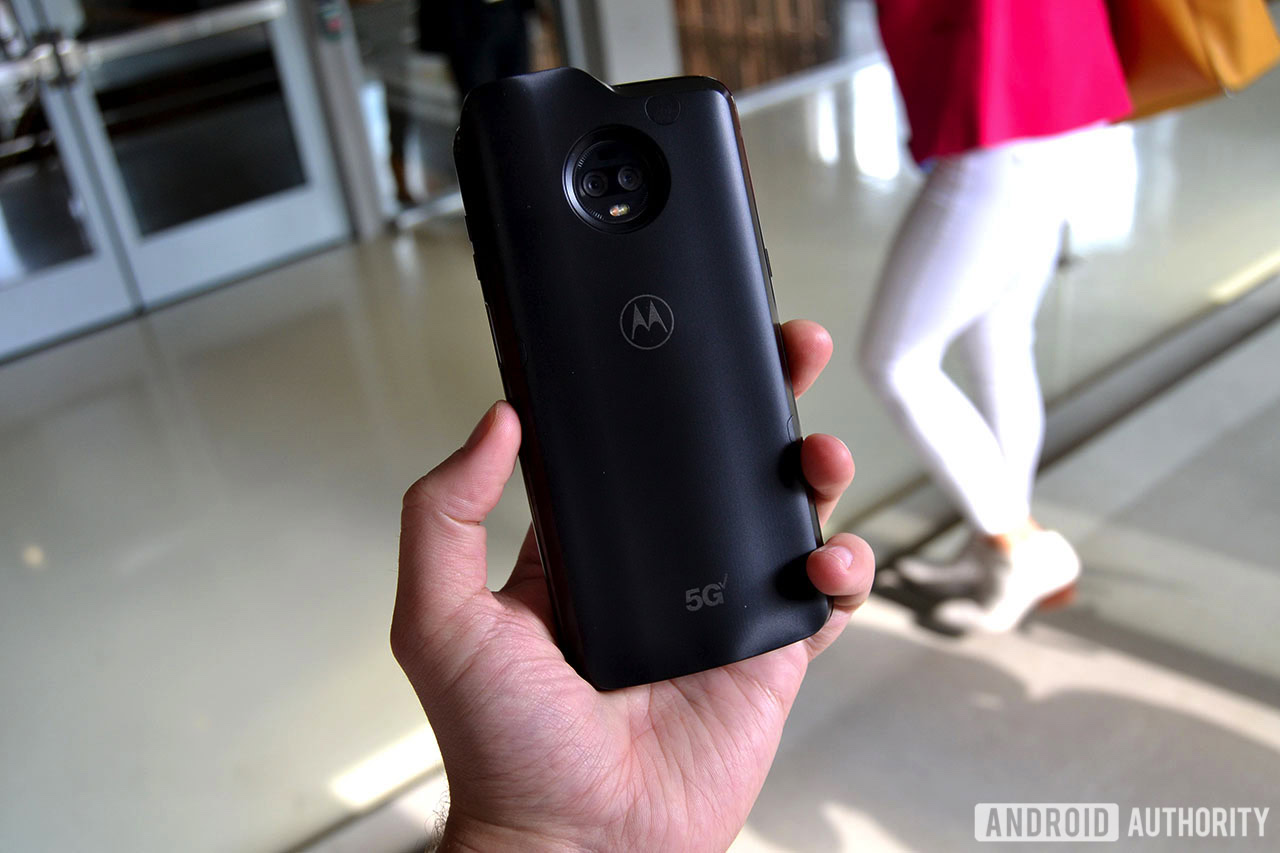
In addition, Verizon is the exclusive seller for the Motorola 5G Moto Mod. This add-on snaps onto the back of the Motorola Moto Z3 and the Moto Z4 (both phones are Verizon exclusives) so it can connect to the carrier’s 5G network. Normally, the price for the 5G Moto Mod will be $349.99, but for a limited time, Verizon is selling it for $50.
You can also get the 5G Moto Mod for $50 if you update your current smartphone and get a Moto Z3 for $10 a month for 24 months on Verizon’s device payment plan.
However, a recent filing on the FCC website indicates this add-on includes a feature designed to limit radiation exposure from millimeter waves. It’s unclear if Motorola and Verizon believe radiation from 5G networks could be a concern, or if this feature was just put in for safety’s sake.
Verizon has recently launched its first 5G standalone hotspot. The Inseego 5G MiFi M1000 allows up to 15 devices to connect to the hotspot at the same time, and it supports 4G networks and speeds where the 5G networks are not available. Inside there is a 4400mAh battery that allows the hotspot to run up to 24 hours on a single charge. It has a 2.4-inch color touchscreen that allows owners to check their data usage, along with access to the device’s settings so they can manage passwords and create custom security profiles for individuals who wish to access the service. Finally, the hotspot has both a USB-C port and an Ethernet port for users who want to physically connect devices, including VR headsets, to the hotspot.
The Verizon Inseego 5G MiFi M1000 is available now for consumers and businesses for $27.08 a month for 24 months on a device payment plan, which makes the price of the hotspot $649.99 without a payment plan. There is also the option to purchase the hotspot for $499.99 with a two-year contract. Verizon customers who already own a smartphone with an unlimited smartphone plan can add a 5G MiFi M1000 to their account and get 50GB of 5G data per month, along with 15GB of 4G LTE data for $30 a month. If they just want the 5G hotspot, 5G data plans start at $85 a month. Business customers can get the hotspot, with a $45 per month unlimited plan, for an additional $15 per month with 35GB of combined 4G/5G data.
Plans and prices
The cost of the Verizon 5G Home network service is $70 per month, or $50 per month if you have a separate Verizon Wireless $30 phone plan. There’s no charge for the first three months, and you also get three months of YouTube TV for free. Google’s service will cost $40 per month thereafter.
Verizon’s mobile 5G plans will basically be an add-on to the current Verizon unlimited plans. If you already have signed up for Verizon’s GoUnlimited, BeyondUnlimited or AboveUnlimited plans, you can add 5G service for an additional $10 a month to those plans. Verizon will also offer the first three months of the 5G service for free.
Other things we know
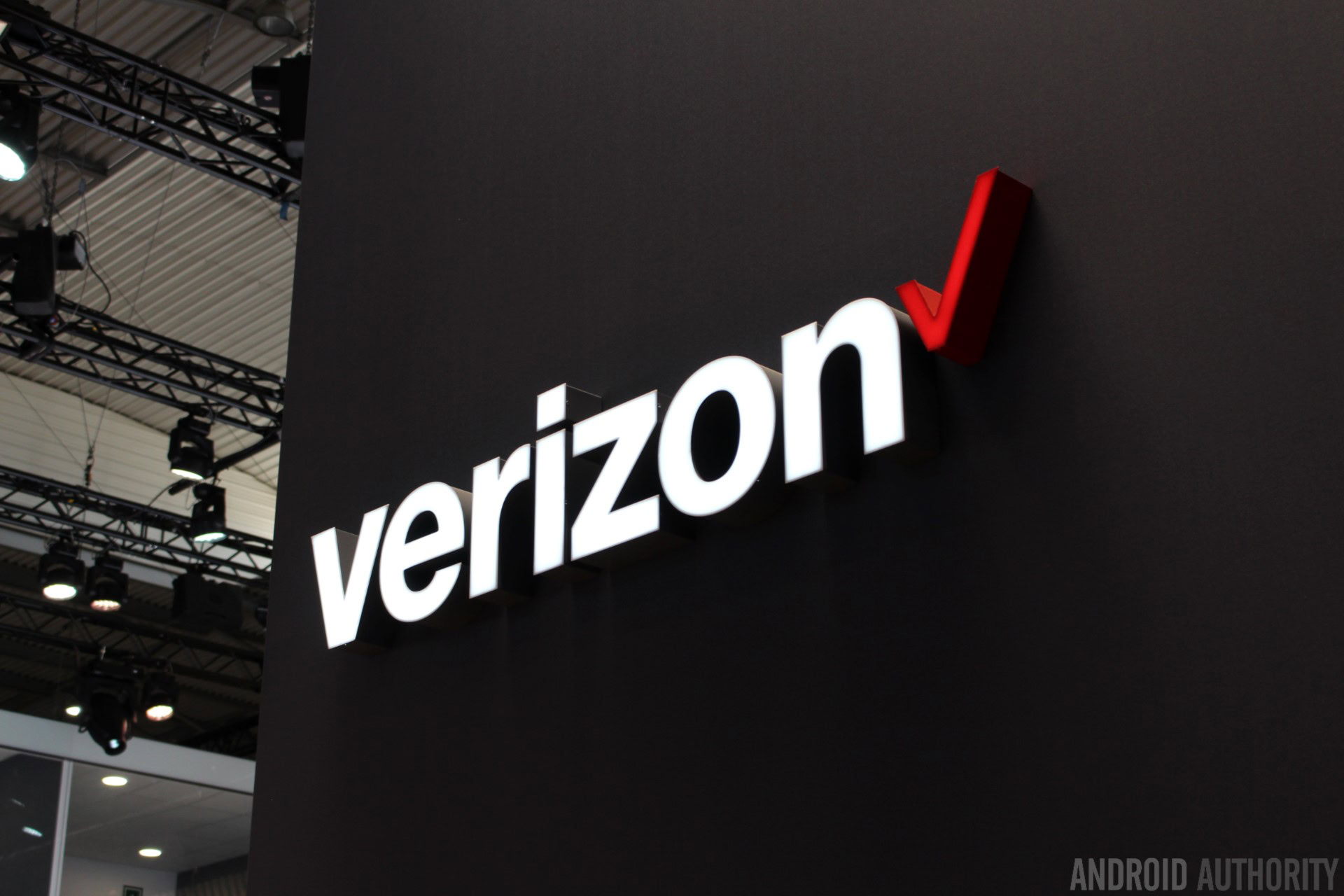
Verizon teamed up with Ericsson to use its commercial 5G Radio Access Network software, which will allow Verizon to switch on its 5G network when ready. The software applies to Ericsson’s 5G-ready Ericsson Radio Systems, which now has a bigger footprint in North America thanks to an expanding 4G partnership with Verizon. They reached a milestone in July by deploying Massive MIMO transmissions in Irvine, California.
Voxon Photonics achieved the world’s first holographic communication using Verizon’s 5G network on the Los Angeles Convention Center show floor. The data only traveled 200 feet between Verizon’s booth and Ericsson’s booth, and consisted of a caller’s holographic face in a real-time conference video using an Intel RealSense depth camera.
Verizon acquired Straight Path Communications in February for $3.1 billion in an all-stock transaction. Straight Path owns a large stockpile of 28GHz and 39GHz spectrum Verizon will use for its 5G services. In turn, 20 percent of Straight Path’s 39GHz spectrum was handed back to the Federal Communications Commission (FCC) due to a violation of the FCC’s buildout and discontinuance rules. The company also paid a $600 million penalty.
Verizon recently announced it was teaming up with Boingo Wireless to offer access to its 5G network speeds indoors and in public spaces. In other words, office buildings, hotels, airports, stadiums and arenas are being targeted for this service. There’s no word on what specific cities and buildings will support 5G speeds.